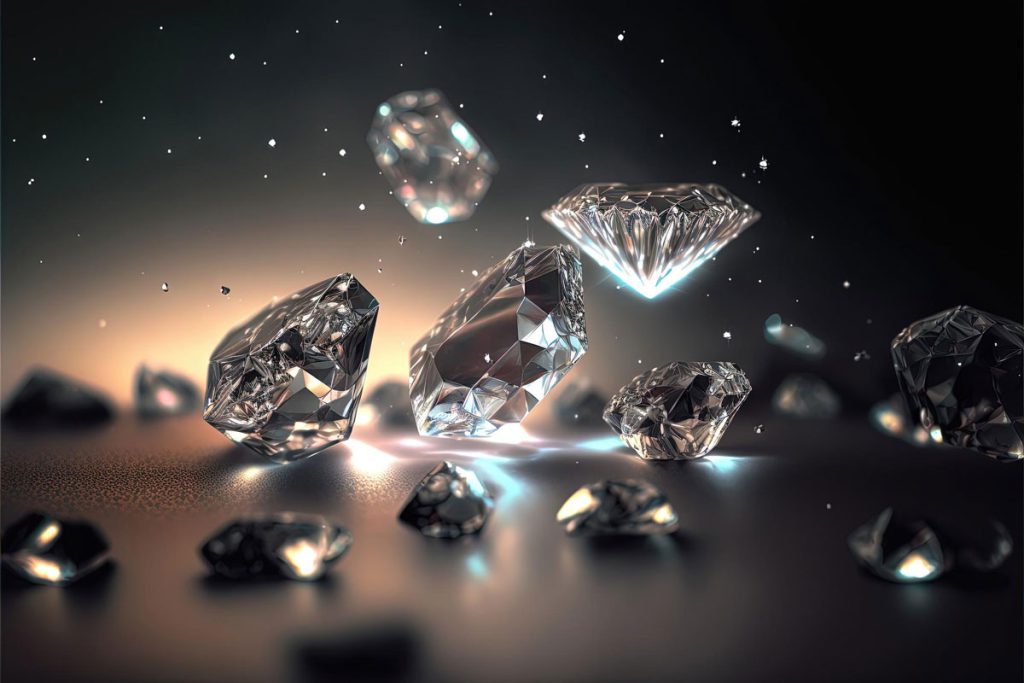1. Understanding Lab-Grown Diamonds
When it comes to diamonds, the conversation has shifted dramatically over the past few years. Enter lab grown diamonds cvd, specifically those created using the Chemical Vapor Deposition (CVD) method. But what exactly are these sparkling gems, and why are they making waves in the jewelry industry?
1.1 What Are Lab-Grown Diamonds?
Lab-grown diamonds are real diamonds. Yes, you heard that right! They share the same physical, chemical, and optical properties as natural diamonds, but they’re created in a controlled environment rather than mined from the Earth. This means they can be produced without the environmental and ethical issues often associated with traditional diamond mining.
1.2 The Difference Between CVD and HPHT
There are two main methods for creating lab-grown diamonds: CVD and High Pressure High Temperature (HPHT). While both produce genuine diamonds, CVD is favored for its ability to create larger and higher-quality gems. HPHT mimics the natural conditions that form diamonds, but CVD uses gas to deposit carbon onto a substrate, growing the diamond layer by layer.
2. The CVD Process: How It Works
Curious about how these sparkling gems are made? Let’s break down the CVD process step by step.
2.1 What is Chemical Vapor Deposition (CVD)?
CVD is a sophisticated process that involves introducing carbon-rich gases into a chamber. Under specific conditions, these gases decompose, allowing carbon atoms to bond and crystallize, forming diamonds.
2.2 The Steps in the CVD Process
2.2.1 Seed Placement
The process begins with a small diamond seed placed in the CVD chamber. This seed acts as a foundation for the new diamond to grow. It’s like planting a seed in soil, waiting for it to bloom!
2.2.2 Growth Phase
Once the seed is in place, the chamber is filled with gases, and the temperature is raised. This initiates the growth phase, where carbon atoms slowly accumulate on the seed, eventually forming a beautiful diamond crystal. Depending on the desired size, this can take anywhere from a few weeks to a few months.
3. Benefits of CVD Lab-Grown Diamonds
Why are people gravitating towards CVD diamonds? Here are some compelling reasons.
3.1 Ethical and Sustainable Choices
In today’s world, many consumers prioritize sustainability and ethics. CVD diamonds are often seen as a responsible choice because they don’t contribute to the environmental degradation associated with mining. Plus, there’s no risk of “blood diamonds” in the mix.
3.2 Quality and Purity
CVD diamonds are typically of higher quality and purity than many natural diamonds. They can be crafted to have fewer inclusions and can be tailored to specific qualities that the buyer desires.
3.3 Cost-Effectiveness
Let’s face it—diamonds can be pricey. CVD diamonds are generally more affordable than their natural counterparts. This means you can get a bigger, better-quality diamond for your budget, which is a win-win!
4. Myths and Misconceptions about CVD Diamonds
Despite their benefits, there are still some myths floating around. Let’s clear the air.
4.1 Are CVD Diamonds Fake?
Nope! CVD diamonds are not fake. They are real diamonds, just created in a lab instead of underground. They have the same brilliance and beauty as mined diamonds.
4.2 The Value Comparison with Natural Diamonds
Many believe that CVD diamonds are worth less than natural lab made diamonds. While it’s true that they can be cheaper, their value lies in their quality, sustainability, and the personal choice they represent.
5. How to Choose a CVD Lab-Grown Diamond
Ready to shop for a CVD diamond? Here’s what you need to know.
5.1 Understanding the 4 Cs
Just like natural diamonds, CVD diamonds are evaluated based on the 4 Cs: Carat, Cut, Color, and Clarity. Familiarizing yourself with these characteristics will help you make an informed choice.
5.2 Selecting a Reputable Jeweler
When it comes to buying a CVD diamond, it’s crucial to find a jeweler you trust. Look for someone who specializes in lab-grown diamonds and provides certification for their products.
6. Caring for Your CVD Lab-Grown Diamond
Once you’ve found the perfect diamond, you’ll want to keep it sparkling. Here’s how to care for it.
6.1 Cleaning Tips
Regular cleaning is essential. You can use a mild soap solution and a soft brush to gently clean your diamond at home. Avoid harsh chemicals that can damage the stone.
6.2 Regular Maintenance
Consider having your diamond inspected by a professional every year. This ensures that any settings are secure and keeps your diamond looking its best.
7. Frequently Asked Questions
Let’s tackle some common queries about CVD diamonds.
7.1 Are CVD Diamonds Worth Buying?
Absolutely! CVD diamonds offer a blend of beauty, ethical sourcing, and affordability, making them a smart choice for many buyers.
7.2 How Do CVD Diamonds Compare to Natural Diamonds?
CVD diamonds are chemically and physically identical to natural diamonds, but they often come with lower price tags and fewer ethical concerns.
8. Conclusion: The Future of Diamonds
Lab-grown diamonds, particularly those created through the CVD process, are changing the diamond landscape. With their ethical advantages, affordability, and stunning beauty, they represent a modern choice for couples looking to symbolize their love. Whether you’re planning an engagement or simply want to treat yourself, CVD diamonds are a sparkling option worth considering. So, why not embrace the future of diamonds and find a gem that truly resonates with your values and style? Happy diamond hunting!
You may also like
-
The Allure of Lab-Grown Diamond Rings: A Modern Revolution in Elegance
-
The Truth About Loose Man Made Diamonds: A Modern Marvel in Jewelry
-
Engagement Rings for Men: A Modern Trend in Symbolizing Commitment
-
Guides to Lab Grown Diamonds: Your Ultimate Guide to Choosing the Perfect Stone
-
Lab Diamonds Are the Future: Revolutionizing the Jewelry Industry

